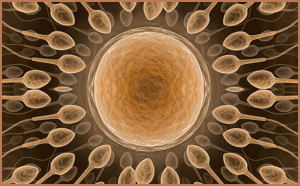If you are an Ayurvedic masseuse or have specialized in postnatal bodywork, consider expanding your package of offerings to a value specific month by month service for your clients. Here is the advice sourced from the Dhanwantari Institute, from some of the classical texts, with a few comments from the peanut gallery.
Because the fetus in the first three months is of very unstable, jelly like consistency and hyper-responsive to maternal experience, Ancient Ayurvedic texts tend not to advise regular massage the first three months. Some gentle oil/massage on marma points and especially the hands and feet (not deep digs however) is considered often beneficial however. Points to avoid are similar to in accupuncture and other modalities.
Oiling in general is considered to increase warmth in the body, and mama’s pitta is up especially in the first trimester, so warm oil massage may not be best idea as full body treatment. Use of coconut will be preferred, or more energy work such as marma therapy, polarity, acupressure, etc. Heightened pitta continues though generally not as dramatically, with vata on the increase naturally also after the first trimester.
In any case, what mama experiences, Ayurveda believes baby experiences, so stress or intensity to maternal body can create some strain to baby’s system which is living in heightened sensitivity and delicacy at this time. Or mild massage can be be beneficially stimulating to the marmani for mother and baby.
From 4 months to labor, massage has specific advisories also, according to the Dhanvantari Institute. In our forth month, gentle massage which benefits mama’s mind and mood helps stabilize baby’s heart, taking extra care around mother’s abdomen. We know that just applying warm oil against the lay of the hair increases neurotransmitters in a good way. Applying oil is a more appropriate way to speak of massage style than what most call massage for this time.
At this time oil padding over the vagina is recommended also.
In the 6th month, gentle breast massage, especially nipples, is advised with herbalized or plain coconut oil. Why 6th month specifically, I have no idea. Perhaps this is recommended from 6th month on; I would say so. Modern research has found that twisting and stretching of the nipples this early does not seem to really make a difference, similarly starting so early on stretching of the perineum. Oiling serves to promote natural elasticity and comfort however.
In the 7th month, an herbal paste on the stretching and sometimes burning tissues along with massage is valuable, and massage can be especially helpful with swelling on the feet. Although the article does not say which herbs, I would choose demulcent and skin herbs and oils, and essential oils like myrrh, geranium, ylang ylang, chamomile, rosewood and vetiver for the skin which are seriously committed to quality, as they will be influencing baby in utero also.
Massage schools teach what therapists agree, with the strain on body mechanics of weight changes, deeper work along spine, hips and neck/shoulders feels especially good, done in well supported side-lying position. Yet, due to softening of connective tissues from the hormone relaxin in some mothers early to mid pregnancy, deep work may need to be modified to not overstretch already easily stretched ligaments and tendons. Again, mothers may crave and need some extra support to pregnancy discomforts, so personalized choices by therapist and mother are important. Use of the Ayurvedic abhyanga style oil massage gives many relaxing and balancing benefits without going into excessively deep tissue work.
In the 8th and 9th month, vaginal massage and oil padding of the vaginal area is advised, and from 36 weeks/9th month a small 30 ml basti on alternate days is advised on regular basis to lubricate the tissues. The quantity of oil does not significantly increase apana vayu, but offers good preparation for birth in multiple ways. This practice is discussed by several practitioners including Vaidya Seema Datta in the UK, on Jan 13th, 2013 in the pertinatalayurveda forum.
“Tissues being softened and elastic, less resistance during the delivery results in bearable pain and many of our mums are able to deliver without any intervention with much less average delivery time” reports Seema. She advises this protocol regularly with all her expectant client at 36 weeks with olive oil or sesame oil, unless mother is post due date. Then a mix of castor and sesame is more indicated.
Once a mother has gone into early labor, another warm small oil enema of about 1/3-1/2 cup, after full body abhyanga (oil massage) is advised for natural body relaxation and easier labor. Ayudoulas know that the mother with vaginal delivery can benefit from postpartum massage as soon as she would like. After major abdominal delivery, application of warm oil all over her body except avoiding abdomen is still very beneficial for maternal Vata, but massage is contraindicated until the wound is sealed, mother feels ready, and doctor or midwife gives the ok for this gentle treatment.
Ysha Oakes, LMT, CPAD
 In a nutshell, shukra (sperm) and artava (egg) contain the maternal & paternal elements of heredity. These include components of the: 5 elements, 20 qualities of nature, 3 mental gunas (SRT), three doshas (VPK), 7 dhatus (tissues), and refined essence of the three doshas (ojas, tejas and prana–OTP), all of which shape the embryo and are known as “basic units of hereditary.”
In a nutshell, shukra (sperm) and artava (egg) contain the maternal & paternal elements of heredity. These include components of the: 5 elements, 20 qualities of nature, 3 mental gunas (SRT), three doshas (VPK), 7 dhatus (tissues), and refined essence of the three doshas (ojas, tejas and prana–OTP), all of which shape the embryo and are known as “basic units of hereditary.”
